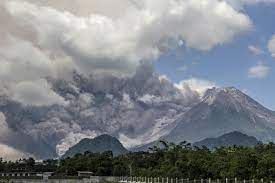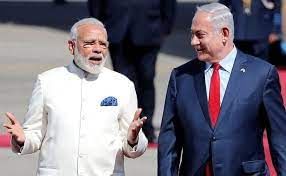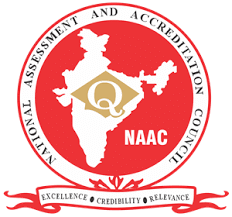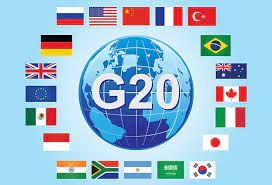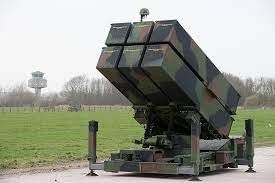UPSC Daily Current Affairs - 12th March 2023 | Current Affairs & Hindu Analysis: Daily, Weekly & Monthly PDF Download
GS-I
Mount Merapi
Why in News?
Recently, Mount Merapi erupted with avalanches of searing gas clouds and lava, forcing concerned national authorities to halt tourism and mining activities.
About Mount Merapi:
- Mount Merapi (Mountain of Fire) is one of the world's most active volcanos located in
- It rises to 9,551 feet and has steep slopes with dense vegetation on its lower flanks.
Why do more volcanoes occur in Indonesia?
- Indonesia is located on the Ring of Fire, a vast area around the Pacific Ocean.
- It consists of over 17,000 islands and islets — and nearly 130 active volcanoes.
- The Ring of Fire also referred to as the Circum-Pacific Belt, is a path along the Pacific Ocean characterized by active volcanoes and frequent earthquakes.
- The abundance of volcanoes and earthquakes along the Ring of Fire is caused by the amount of movement of tectonic plates in the area.
- Along much of the Ring of Fire, plates overlap at convergent boundaries called subduction zones. That is, the plate that is underneath is pushed down, or subducted, by the plate above. As rock is subducted, it melts and becomes magma.
- The abundance of magma so near to Earth’s surface gives rise to conditions ripe for volcanic activity.
- A significant exception is a border between the Pacific and North American Plates. This stretch of the Ring of Fire is a transform boundary, where plates move sideways past one another.
- This type of boundary generates a large number of earthquakes as tension in Earth’s crust builds up and is released.
Source: The Hindu
GS-II
India -Sweden: Flourishing Partnership
Why in News?
This year marks 75 years of bilateral relations between India and Sweden, and it is an occasion to celebrate. Bilateral trade has reached unprecedented levels in the past year, with Swedish companies making significant strides in the Indian market. The latest Indian administration has shown a keen interest in augmenting and broadening the partnership between the two countries.
The Past and Present: Bilateral Relations between India and Sweden
- Sweden and India have come a long way in the past 100 years.
- From limited contacts to a flourishing partnership, both countries have developed national wealth through industry and manufacturing. Swedish companies have been key drivers in both domains, and through their work, Sweden and India have found friends in one another.
- In 2023, Sweden is celebrating the anniversaries of Ericsson, SKF, Alfa Laval, and Volvo, notable Swedish companies in India.
Celebrating 75 Years of Friendship
- Record bilateral trade: India and Sweden celebrated a record year for bilateral trade in 2022, with Swedish companies experiencing strong growth in India.
- Flourishing partnership: Both countries are committed to expanding their partnership and collaborating in innovation, green transition, energy, health, industry policy and more.
Emphasizing the Importance of Industry and Manufacturing
- Key sectors: Industry and manufacturing are key to building long-term economic growth, and Sweden and India have identified these sectors as key areas of collaboration.
- Swedish companies have been key drivers: An active industry policy necessitates partnerships and taking bold steps, and Swedish companies have been key drivers in industry and manufacturing in India for several decades.
Prioritizing Green and Sustainable Practices
- Commitment to green supply chain: The future belongs to green and sustainable practices, and both Sweden and India are committed to socially and environmentally sustainable practices throughout the entire supply chain.
- Green transition and digitalisation: There is a clear commitment to this vision from governments and businesses alike, with a focus on digitalisation, the green transition, and the industry of the future.
Way ahead: Opportunities for Even Closer Ties
- There are opportunities for even closer ties between India and Sweden, including a Free Trade Agreement between the EU and India.
- The European Union presidency offers a chance to explore this possibility, which would have a positive impact on economic and industrial exchange, particularly in cities like Pune where Swedish companies have a strong presence.
Conclusion
The partnership between India and Sweden has come a long way in the past 75 years. Both nations have identified industry and manufacturing as key to building long-term economic growth, and there is a need to deepen work towards socially and environmentally sustainable practices.
Source: Indian Express
National Assessment and Accreditation Council (NAAC)
A recent report by the office of the Comptroller and Auditor General (CAG) pointed out glaring discrepancies in the assessment and accreditation of higher education institutions by the National Assessment and Accreditation Council (NAAC).
About National Assessment and Accreditation Council (NAAC):
- NAAC was established in 1994 as an autonomous institution of the University Grants Commission (UGC).
- Head Quarter: Bengaluru.
- Function: Evaluation, assessment, and accreditation of Higher Education Institutions (HEIs) in the country.
- Assessment is a performance evaluation of an institution and its units and is accomplished through a process based on self-study and peer review using defined criteria.
- Accreditation refers to the certification given by NAAC, which is valid for a period of five years.
- The ratings of institutions range from A++ to C. If an institution is graded D, it means it is not accredited.
- At present, the Assessment and Accreditation by NAAC is done on a voluntary basis.
- Composition:
- It functions through its General Council (GC) and Executive Committee (EC), comprising educational administrators, policymakers, and senior academicians from a cross-section of the Indian higher education system.
- The Chairperson of the UGC is the President of the GC of the NAAC.
- The Chairperson of the EC is an eminent academician nominated by the President of GC (NAAC).
- The Director is the academic and administrative head of NAAC and is the member-secretary of both the GC and the EC.
- NAAC is advised by the advisory and consultative committees constituted from time to time.
Key Facts about University Grants Commission (UGC):
- It came into existence on 28th December 1953 and became a statutory Organization of the Government of India by an Act of Parliament in 1956.
- Objective: Coordination, determination, and maintenance of standards of teaching, examination, and research in university education.
- UGC provides recognition to universities in India and disburses funds to such recognized universities and colleges.
Source: The Print
GS-III
G20: SUMups To Tackle Global Natural Disasters
Why in News?
The concept of SUMups, a hypothetical bundling of complementary start-ups globally that work on some aspect of managing natural disasters. There are some of the innovative technologies developed by these start-ups and how they can be combined to develop more effective disaster management solutions.
Background: The Rising Frequency and Impact of Natural Disasters Globally
- Increasing Frequency and Severity of Natural Disasters: Globally, natural disasters have become increasingly common and the severity of their impact is worsening.
- FAO Report: According to the FAO’s report, there were 360 natural disasters per year in the 2010s that resulted in at least 10 deaths, affected 100 or more people, led to homelessness or injury, and required a declaration of a state of countrywide emergency and an appeal for international assistance.
- Comparison of Natural Disasters: This number is significantly higher than the 100 events recorded in the 1980s and the 90 events recorded in the 1970s.
- Frequency of Climate, Weather, and Hydrology-related Disasters: Furthermore, climate, weather, and hydrology-related disasters are becoming more frequent, while geophysical and biological emergencies are not, with the exception of Covid-19.
- Global Impact of Natural Disasters: The impact of these natural disasters is global, affecting countries across the world in various ways, including forest fires, heat and dust storms, and floods.
- The Need to Improve Disaster Response and Mitigation Efforts: As a society, it is important to recognize that natural disasters will continue to pose a threat and we need to improve our ability to respond and mitigate their effects.
- Measures Being Taken to Address the Issue of Natural Disasters: Fortunately, there are measures being taken to address this issue, including research into improving disaster response systems and the development of new technologies to aid in disaster preparedness and relief efforts.
Disaster Prevention Technologies
- The disaster prevention technologies developed by start-up
- CERD-AR: CERD-AR developed an Augmented Reality (AR) application that gamifies the animations of disasters and provides disaster prevention drills to prepare people for evacuation and reaction in ultra-realistic settings.
- A Palo Alto-based start-up One Concern: One Concern built a digital twin of the world by analyzing satellite images to predict natural disasters. The platform combines Artificial Intelligence, Machine Learning (AI/ML), and supercomputers to develop seismic and flood technology for real-time prediction of flooding and assess the risk associated with various events.
Emergency Response and Reconstruction Technologies
- Garuda Aerospace: Garuda Aerospace deployed drones in Turkey for surveillance in the affected earthquake areas to identify trapped victims.
- HW Design Labs: HW Design Labs developed IoT innovations that support disaster response teams in planning their operations effectively through deep penetrating ground sensing radars, wireless connectivity solutions, advanced tracking, and navigation services.
Emergency Communication Technologies
- MyResQR: This start-up provides emergency communication between victims and stakeholders. The smart QR code manages information and triggers SOS during emergencies by enabling first responders like ambulance services, hospital staff, and other emergency response teams.
Way Ahead
The SUMups represent an opportunity to combine innovative disaster management technologies from start-ups globally to address the Sustainable Development Goals for the whole world, such as building resilient infrastructure and zero hunger.
Conclusion
The Startup20 Engagement Group of G20 can enable many such SUMups that can help deal with the increasing frequency, intensity, and complexity of natural disasters in the future. Sharing ideas and collaborating globally can help us all become better prepared and equipped to tackle these events. The article emphasizes that the sharing of ideas can be a powerful tool for solving complex problems, and the development of SUMups is a step in the right direction for improving disaster management worldwide.
Source: The Hindu
NASAMS (National Advanced Surface-to-Air Missile System)
Why in News?
Norway recently announced its plans to provide Ukraine with two NASAMS firing units in collaboration with the United States.
About NASAMS (Norwegian Advanced Surface-to-Air Missile System):
- It is a medium-range ground-based air defense system.
- It is designed to engage air targets at low and medium altitudes in all weather conditions.
- It was designed and developed jointly by Raytheon (United States) and Kongsberg Defence&Aerospace (Norway).
- It is used by Norway, the United States, Canada, Chile, Finland, Indonesia, Netherlands, Oman, Qatar, Spain, the United Kingdom, and Ukraine.
- It is best suited to defend important stationary assets, such as key military assets, infrastructure, or cities.
- It has been integrated into the S. National Capital Region’s air defense system since 2005.
- Features:
- It is the world's first networked short- and medium-range air defense system that could integrate with other equipment and air defense systems.
- It features an X-Band, 360-degree phased array air defense radar with a 75-kilometer (approximately 47-mile) range to identify targets.
- The NASAMS is armed with three launchers, each carrying up to six missiles.
- The system can engage 72 targets simultaneously in active and passive modes.
- It uses AIM-120 AMRAAM air-to-air missiles, which have been modified for ground launch and have an engagement range of about 30 kilometers.
Source: Indian Express
What are Virtual Digital Assets (VDA)?
Why in News?
The Finance Ministry recently brought out a notification placing all transactions involving virtual digital assets under the purview of the Prevention of Money Laundering Act (PMLA).
About Virtual Digital Assets (VDA):
- According to the Income tax act, 'virtual digital asset' refers to any information, code, number, or token (not being Indian currency or foreign currency) generated through cryptographic means or otherwise and can be called by whatever name.
- It can be transferred, stored, or traded electronically.
- The definition of VDA also specifically includes a non-fungible token, i.e., NFT, or any other token of similar nature, by whatever name is called.
What are Non-fungible tokens (NFTs)?
- NFTs are assets that have been tokenized via a blockchain.
- They are assigned unique identification codes and metadata that distinguish them from other tokens.
- NFTs can be traded and exchanged for money, cryptocurrencies, or other NFTs.
- NFTs can represent digital or real-world items like artwork and real estate. They can also represent individuals' identities, property rights, and more.
Source: The Hindu
|
63 videos|5408 docs|1146 tests
|
FAQs on UPSC Daily Current Affairs - 12th March 2023 - Current Affairs & Hindu Analysis: Daily, Weekly & Monthly
| 1. What is the GS-I exam? |  |
| 2. What are the subjects covered in GS-II? |  |
| 3. What is the significance of UPSC Daily Current Affairs in the preparation for the exam? |  |
| 4. How can I make the most of UPSC Daily Current Affairs for my exam preparation? |  |
| 5. What are some common sources for UPSC Daily Current Affairs? |  |

